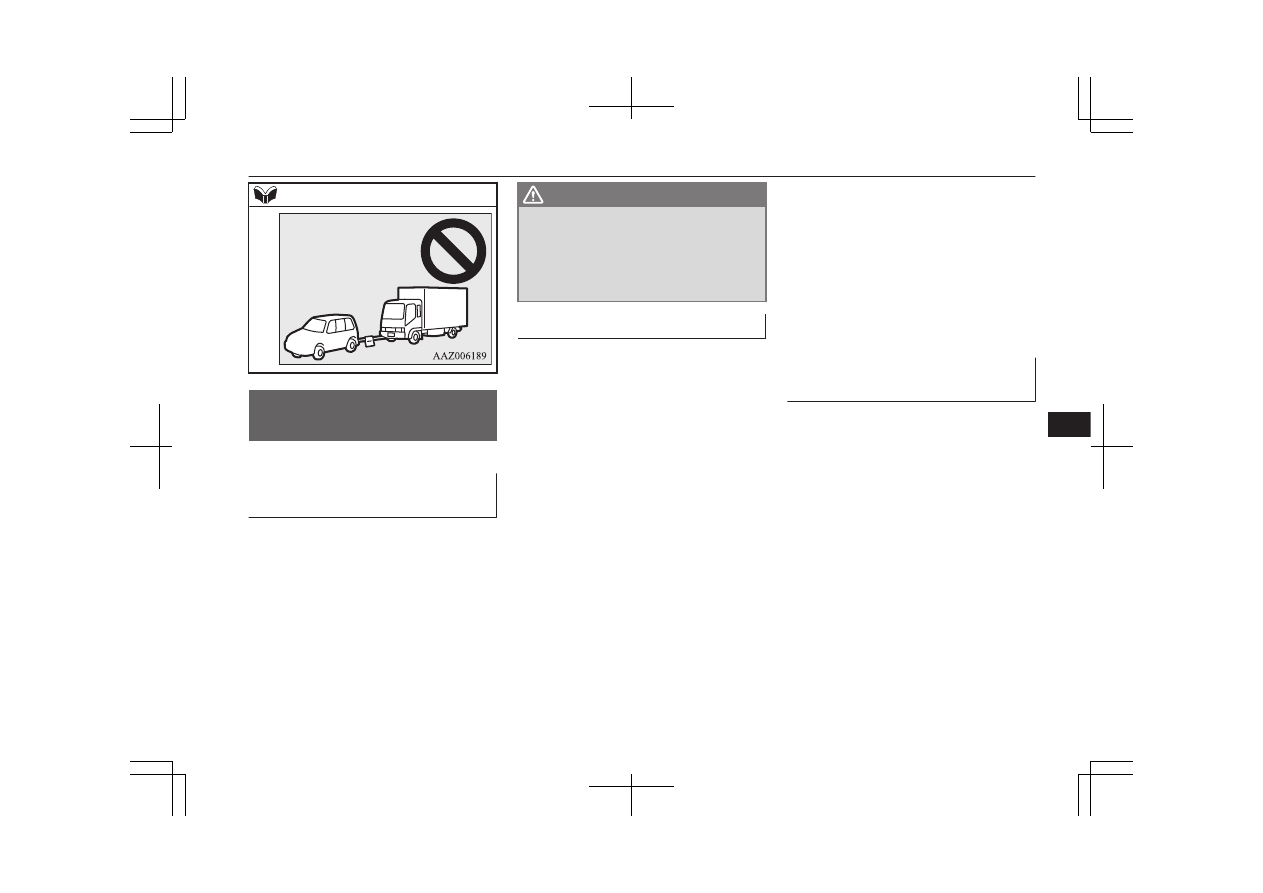Mitsubishi Outlander PHEV (2019 year). Instruction - part 29

NOTE
Operation under adverse
driving conditions
E00801703828
If your vehicle becomes stuck
in sand, mud or snow
If your vehicle becomes stuck in snow, sand,
or mud, it can often be moved by a rocking
motion. Rock your vehicle back and forth to
free it.
Do not spin the wheels. Constant efforts to
free a stuck vehicle can cause transaxle fail-
ure.
If your vehicle is still stuck after several
rocking attempts, call for a commercial tow
truck service.
WARNING
l
When trying to rock your vehicle out of a
stuck position, make sure that there are
no people nearby. The rocking motion can
make your vehicle suddenly lurch for-
ward or backward, and injure any by-
standers.
On a flooded road
l
Do not drive on a flooded road. If you
drive on a flooded road, not only does
the Plugin Hybrid EV System stop but
there may be a failure like electric leak-
age or short circuit.
If you inevitably had to run on a flooded
road and the vehicle was exposed to wa-
ter, be sure to have your vehicle inspec-
ted by a MITSUBISHI MOTORS Au-
thorized Service Point.
l
If there is water on the brakes after driv-
ing through puddles or washing the vehi-
cle, resulting in temporarily ineffective
brakes. In such cases, lightly depress the
brake pedal to see if the brakes operate
properly. If they do not, lightly depress
the pedal several times while driving in
order to dry the brake pads.
l
When driving in rain or on a road with
many puddles a layer of water may form
between the tyres and the road surface.
This reduces a tyre’s frictional resistance
on the road, resulting in loss of steering
stability and braking capability.
To cope with this, observe the following
items:
A- Drive your vehicle at slow speed.
B- Do not drive on worn tyres.
C- Always maintain the specified tyre
inflation pressures.
On a snow-covered or frozen
road
l
When driving on a snow-covered or fro-
zen road, it is recommended that you use
snow tyres or snow traction device (tyre
chains).
Refer to the “Snow tyres” and “Snow
traction device (tyre chains)” sections.
l
Avoid high-speed operation, sudden ac-
celeration, abrupt brake application and
sharp cornering.
Operation under adverse driving conditions
9-21
OGGE19E1
For emergencies
9